This article first appeared in the January 2007 issue of the Elsie Item (No. 58) and offers details about the loss of four LCIs. In particular, it discusses the LCI(L)-85 that is featured in National Geographic series “Drain The Oceans: Secrets of D-Day” airing on Monday, June 3, 2019 at 9:00 PM EDT.
FLOTILLA TEN AT NORMANDY
In the annals of Landing Craft, Infantry one of the greatest stories of bravery and determination is that of the LCIs manned by U.S. Coastguardsmen who stormed ashore with the first wave at Omaha beach on D-Day, the sixth of June, 1944. Four of those rugged square-conns – LCIs 85, 91, 92 and 93 – were lost to enemy action on that eventful day. No other Flotilla lost more ships or men than on that occasion.

To commemorate those brave men and to remind many of our friends and family, who may not know that U.S. Coastguardsmen manned LCIs under Navy control during WWII, we feature a series of articles and pictures which tell the story of that fateful day. In doing, so we also remember many of those “Coasties” who have been members of our Association for years; and we also welcome aboard others who will be joining us for the first time at our Branson reunion. For years they have had their own Flotilla Ten reunions but have now decided that, with declining numbers, the time has come to join with us.
We are honored to have them and send them a hearty “Welcome Aboard”
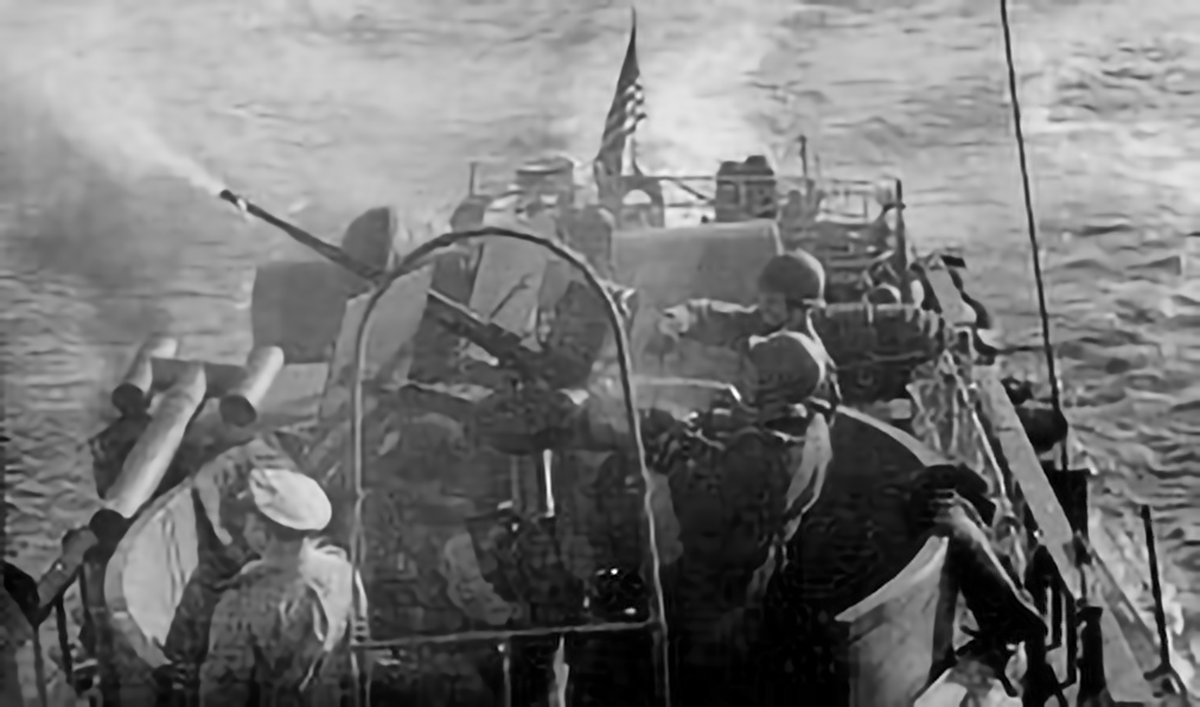
We begin this tribute with the official unit citation which was awarded Flotilla Ten in 2000, some fifty-six years after the event.
THE OFFICIAL COMMENDATION OF FLOTILLA TEN
THE COMMANDANT OF THE UNITED STATES COAST GUARD
WASHINGTON 20593
13 October 2000The Commandant of the Coast Guard takes great pleasure in presenting the COAST GUARD UNIT COMMENDATION to:
FLOTILLA 10 – GROUP 29 – DIVISION 57 for service as set forth in the following
CITATION
For exceptionally meritorious service during Flotilla 10 – Group 29 – Division 57’s participation in the allied force’s invasion of Normandy, France on 6 June 1944. Consisting of 24 Coast Guard-manned Landing Crafts (LCI), Flotilla 10 distinguished itself in the face of heavy enemy fire in delivering hundreds of allied troops and tons of equipment to Omaha Beach at the outset of the invasion. The gallant efforts of the crews of these LCIs were key to clearing channels through minefields and hedgehogs to enable the rest of the allied force to reach the beaches. Although continually exposed to heavy gunfire, the LCIs dodged sunken obstacles and sailed through heavy seas, shuttling between the landing areas and the transport ships delivering badly needed supplies and reinforcements to the beaches. After delivering their human cargo and equipment, the LCIs served as rescue platforms, recovering and transporting injured soldiers and sailors to hospital ships off shore.
Throughout the invasion, four of the LCIs, Numbers 85, 91, 92 and 93, were lost while distinguishing themselves in the heat of battle. LCI-85 was one of the first to ram its way through sunken obstacles and successfully clear a path to the beach before being hit by an 88mm shell that penetrated the hull and exploded in the forwarded troop compartment. After unloading troops to smaller landing craft, LCI-85 stuck a mine and was simultaneously struck by 25 artillery shells. Listing badly, LCI-85 returned to [USS SAMUEL] CHASE and unloaded its wounded before it sank. LCI-91 and LCI-92 were both struck by German shells shortly after reaching the beach and both burst into flames. The crews fought the fires while unloading troops. These LCIs burned throughout the day, giving off thick smoke that served as a key landmark for other allied forces approaching the coast. Further down the beach, LCI-93 successfully delivered its first load of troops, but grounded on a sandbar during their second delivery and took 10 direct artillery hits. As the invasion progressed, the remaining LCIs of Flotilla 10 successfully rescued over 400 injured allied personnel.
These were instrumental in the successful invasion of Normandy and in turning the tide of World War II. The dedication and devotion to duty exhibited by the crew of Flotilla 10 – Group 29 – Division 57 during this period are in keeping with the highest traditions of the United States Coast Guard.
JAMES M. LOY
Admiral, U.S. Coast Guard Commandant
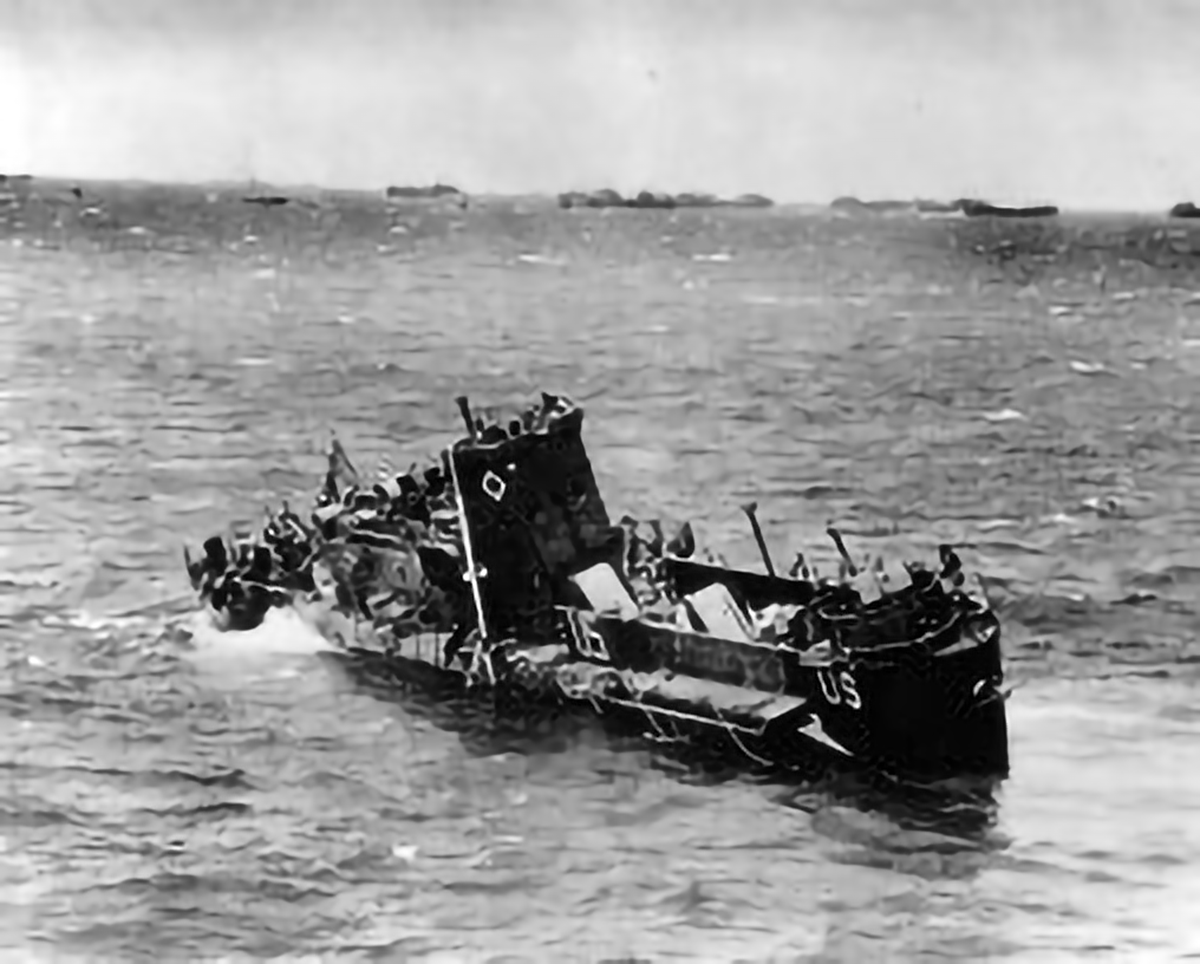
THE AFTER-ACTION REPORT OF THE LCI-85
by LTJG Coit Hendley, Commanding Officer
The 88’s began hitting the ship, they tore into the compartments and exploded on the exposed deck. Machine guns opened up. Men were hit and men were mutilated. There was no such thing as a minor wound.
– Lieutenant, Junior Grade, Coit Hendley
The History of Flotilla 4 / 10, Group 29, Division 57
The Coast Guard-manned USS LCI(L)-85 was commissioned on 1 January 1943. She was assigned to LCI(L) Flotilla 4. After undergoing shakedown and training exercises, she sailed across the Atlantic in company with the other LCI(L)s of the flotilla and participated in the North African occupation in Tunisia, from 1 June to 9 July 1943. She then landed troops during the invasion of Sicily on 9 July 1943 and the landings at Salerno on 9 September 1943.
She then sailed for England as part of the same flotilla, now renamed Flotilla 10, in preparation for the invasion of Normandy. Her commanding officer was LT(JG) Coit Hendley, USCGR. After undergoing training exercises throughout the spring of 1944, she landed troops on Omaha Beach on the morning of 6 June 1944. She was severely damaged by enemy fire and mines as soon as she landed. Hendley later stated: “The 88’s began hitting the ship, they tore into the compartments and exploded on the exposed deck. Machine guns opened up. Men were hit and men were mutilated. There was no such thing as a minor wound.” She retracted off the beach and sailed offshore to the Samuel Chase (APA-26) where she off-loaded the wounded before she capsized. She was then sunk with a mine. Fifteen soldiers aboard were killed in action, and approximately 30 soldiers and four of the LCI(L)-85’s crew were wounded.
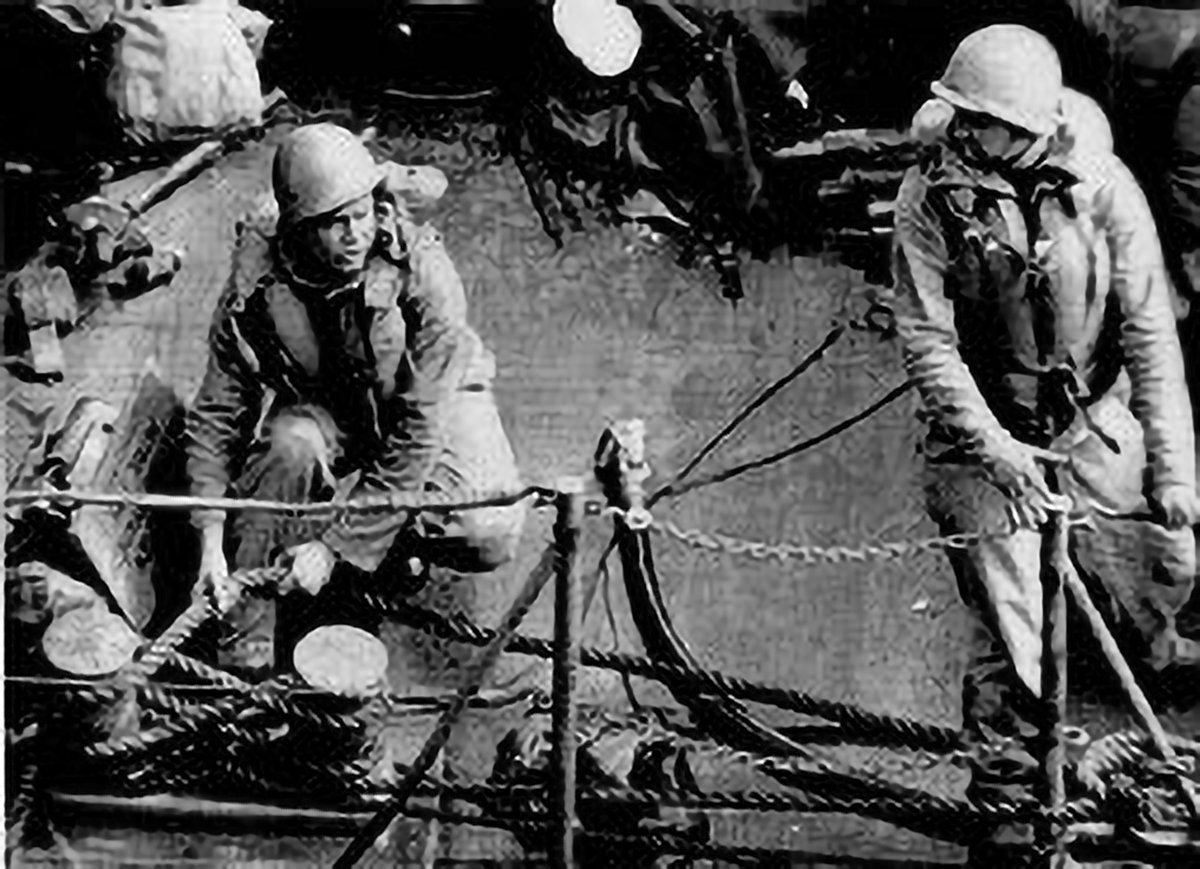
Hendley’s “After-Action” report reads as follows:
- This is a report of the action of the USS LCI (L) 85 during Operation Neptune.
- The USS LCI(L)L-85 sank on 6 June 1944 at approximately 1430 about 10 miles off the coast of France as a result of a teller mine exploding under the bow and shellfire suffered while landing troops on the beach assaulted by Assault Force “0”. All ship’s personnel were saved.
- LCI(L)-85 arrived at the transport area with the other ships attached to Assault Force “0” and circled in the LCI collecting area until times to make the run into the beach. The ship was scheduled to hit Omaha Beach, sector Easy Red, at K plus 120 which made it at 0830 on 6 June 1944. At 0820 we arrived at the line of departure. The primary control vessel for Easy Red beach called to us by loud hailer and told us to go into the beach at this point. As a result of the strong tide running along the beach, the control vessel had drifted until it was almost past Easy Red beach. We actually landed in the left flank of Easy Red or the right flank of Fox Green rather than the right flank if Easy Red as scheduled.
- We grounded at 0830 and put out both ramps. The water was too deep for the troops to wade ashore so we retracted both ramps and began to back off the beach. As the anchor was secured, something hit the aft winch causing her to stop running. There were no LCVP’s in sight to help unload so we went about a hundred yards to the right and made another beaching.
- This beaching was made without the anchor as the winch would not start. As the ship grounded a teller mine exploded under the bow splitting the void tank. The port ramp went down and the troops began going ashore. Shells and machine gun fire began to hit us. About fifty troops got down the port ramp before a shell hit it and blew it off the sponsons and over the side. As the starboard ramp had not gone down and the wounded men were jamming the deck, we backed off the beach again.
- A check revealed that we had approximately 15 dead and 30 wounded men all in the forward part of the ship. We had been hit approximately 25 times by shells. Fire was starting in troop compartments 1, 2, and 3. Water was coming in slowly from shell holes below the water line and the hole made by the mine. No hits had been suffered from the engine room aft.
- We backed off the beach and stood off about 200 yards. The damage control party began fighting the fire and within 30 minutes had them out. In compartments 1 and 2 the fire had been bunks, blankets, etc. burning. In compartment 3 oil from a punctured fuel tank was also burning.
- As we were carrying several Army and Navy doctors and our pharmacists’ mates, the wounded received immediate care.
- All but about 30 of the troops that were able to go ashore were sent in by LCVP. We could not get enough to complete unloading, so we proceeded to the USS SAMUEL CHASE to unload the casualties. We went along the CHASE about 1200. We had a bad list from the water in the compartments forward.
- The damage control party was making an attempt to pump out the water with three Pacific Pumpers but it was not too successful. The strainers on the pumpers would clog up after five minutes running and would have to be cleaned.
- By 1330, all the wounded and dead were transferred to the CHASE. We backed away from her and were taken in tow by the AT 98. We had such a bad list that the tugboat captain and I decided to try to pump the water rather than make the beach.
- The attempt was unsuccessful and the LCI (L) 85 capsized about 1430. The crew scrambled on board the tug before she went over. She turned slowly on her side and then bottom up immediately. A demolition charge was put in her stern and she then went down completely.
- Casualties to the crew were four men wounded. These men were placed on the CHASE for treatment.
- Confidential publications and confidential material on board was on the bridge in a weighted sack and went down with the ship in 14 fathoms of water.
Lt. ( jg) Coit Hendley USCGR Commanding Officer
About the painting, “The Tough Beach”, at the top of the article…
This painting by World War II Navy combat artist Dwight C. Shepler is from the art collection in the Navy Historical Museum at the Washington, DC, Navy yard. Entitled “The Tough Beach,” it depicts LCI 93, grounded on a sandbar on Omaha Beach, being subjected to murderous fire from German 88 millimeter guns.
All day the landing waves suffered terrible attrition from the stubborn, enfilade German fire which raked the shore. A coast studded with beach and underwater obstacles, mines, and German fortified positions and pillboxes, it proved deadly to many American soldiers and sailors on June 6, 1944.
– Dwight C. Shepler, the artist
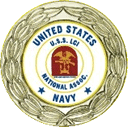
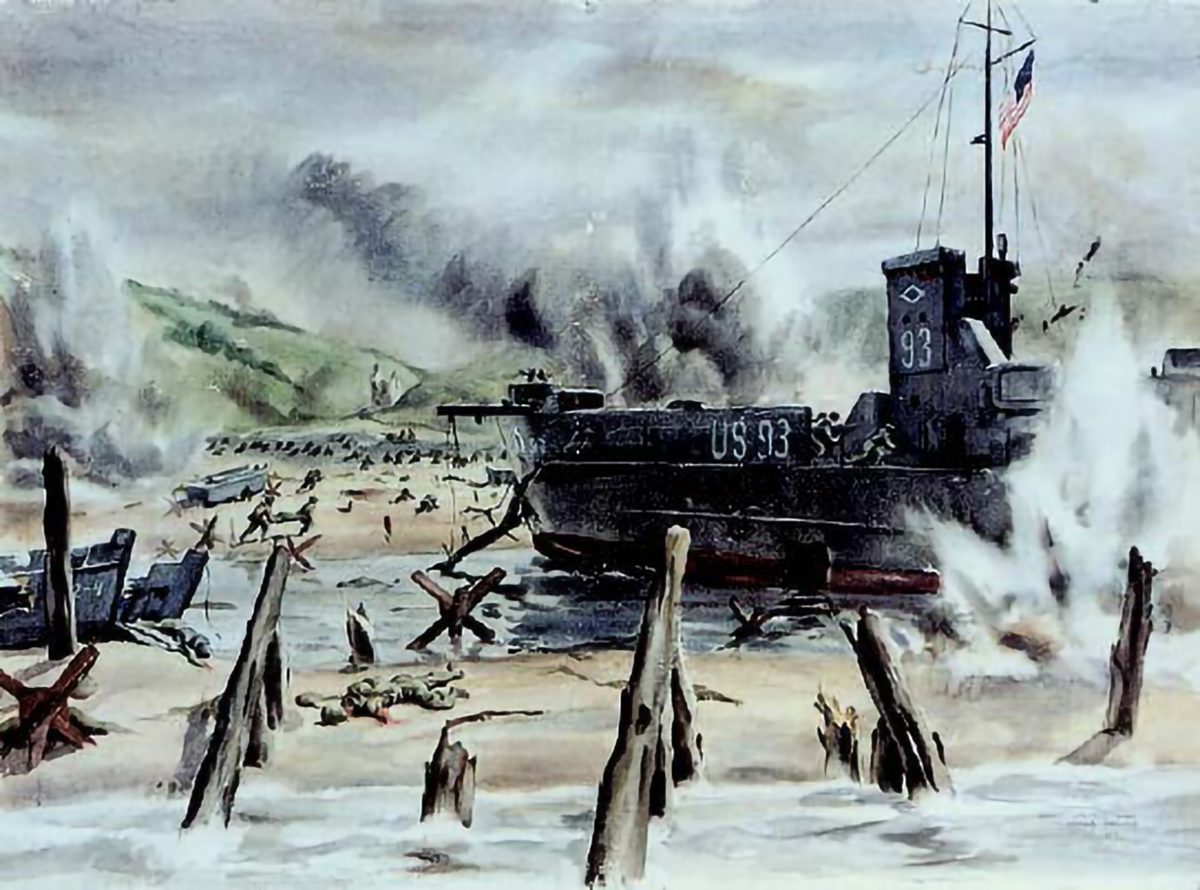
Pete Hendley
Thank you for this fine tribute to these LCIs! I know my father Coit Hendley Jr. would be proud.
Luke Moore
My father, Robert H. Moore, was on your Dad’s boat, LCI 85, on D Day. He told the story of the murderous fire they endured trying to get ashore. Dad often said the USCG were among the bravest he saw that day… they had to land again and again into that hell, when he only had to land at Easy Red twice!
John muller
My father was Navy Chief LCI 414. I am looking for any photos of him in the Navy or on his ship. I have his dog tag number if you want it? His name: GLENN EDWARD MULLER
John cahill
My dad was on the US 91 with the 147th combat engineers, 6th engineers special brigade. More than a yr after d-day he returned to omaha beach and took a pic of the severely damaged 91. It’s in his WW2 photo album. He was a great man. He passed 4-1-13. I miss him & my mom countless times a day. They were from the greatest generation.
Walter Rice
John,
My father, Joseph Rice, was a captain in Headquarters Company, 116th Infantry Regiment, 29th Division. He passed away in 1987. My father was the boat team commander on LCI 91on D-Day. If possible, I would like see your father’s photo of LCI 91. Thanks.
Walter Rice
John Cahill
Walter:
I’m not very good at conveying messages via this medium. I don’t have a computer, i only have this smartphone. If you could get me your email or phone # i could send you that pic of the US 91.
Walter Rice
John,
Sorry for the long delay. My email is provided below. Thanks.
wa*********@co*****.net
Eric Harthen
My grandfather was Coast Guardsman George G. Schanz, motor machinist mate 3rd class aboard LCI 349 that day. He never spoke of this day to any of us while he was with us. He passed in July 2013. I wish I could’ve heard his stories & known him better. If anyone has any relatives who were with him on LCI 349, or any details, anything is appreciated. Thank you all for your/your loved ones’ service.
er*********@gm***.com
Stan Galik
Eric: Additional information on LCI 349 has been provided in an email to you on 01/12/2023.
Kurt Croft
Trying to find some information on my grandfather, John Croft, who served during the D-Day invasion on an LCI. I’m not certain which vessel he was on, we believe it was 88, but also know he served during Okinawa and we may have the vessels confused. Would love to know for sure.
Greatly appreciated!